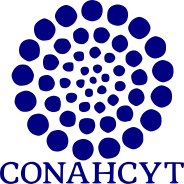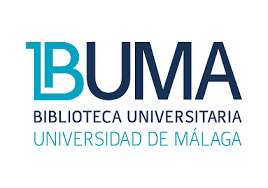Efecto de la temperatura y tiempo de almacenamiento en la concentración de algunas fitohormonas y germinación de las semillas del chile piquín Capsicum annuum var. glabriusculum (Dunal) Heiser & Pickersgill
Palabras clave:
germinación, semillas, chile piquin, fitohormonasResumen
El género Capsicum es una hortaliza de importancia económica a nivel mundial. En México es una importante actividad económica en el sector agrícola, por ello la importancia del cultivo de variedades que permitan abrir nuevas áreas de oportunidad comercial tanto a nivel nacional como internacional. Una de estas variedades es el chile piquín Capsicum annuum var. glabriusculum (Dunal) Heiser & Pickersgill, cuyo aprovechamiento se reduce únicamente a poblaciones silvestres, ya que se han hecho varios intentos de cultivarla de manera intensiva teniendo como resultado bajos porcentajes de germinación, debido a que la semilla presenta latencia fisiológica no profunda, rasgo característico de especies que aún no han sido domesticadas. En este estudio se propuso conocer el efecto de la temperatura y el tiempo de almacenamiento, sobre el contenido de triptófano (aminoácido precursor de auxinas), citocininas (kinetina) y giberelinas (GA3) presentes en la semilla y su relación en el proceso de germinación. Para evaluar la capacidad de germinación de las semillas de chile piquín, estas se almacenaron a dos temperaturas (4 °C y 24 °C) y cinco tiempos de almacenamiento (0, 3, 6, 9 y 12 meses). Además, se cuantificó el contenido de fitohormonas, auxinas, citicininas y giberelinas utilizándose la técnica de Cromatografía Líquida de Alta Resolución (HPLC). Los resultados muestran que el contenido de las tres fitohormonas se incrementó con respecto al tiempo de almacenamiento. El más alto porcentaje de germinación y concentración de fitohormonas se presentó a los 9 meses de almacenamiento; mientras que, a los 12 meses, la germinación empieza a disminuir, así como el contenido de fitohormonas, indicando que la calidad y viabilidad de la semilla ha empezado a decrecer.
Referencias
Almeida A., M. Castel-Branco & A. Falcão. 2002. Linear regression for calibration lines revisited: weighting schemes for bioanalytical methods. Journal of Chromatography B, 774, 215-222
Barkawi L., Y. Tam, J. Tillman, J. Normanly & J. Cohen. 2010. A high-throughput method for the quantitative analysis of auxins. Nature Protocols, 5, 1609-1618
Baskin C. & J. Baskin. 2014. Seeds: ecology, biogeography, and evolution of dormancy and germination. Second edition. Academic Press, San Diego, California, USA
Bentsink L. & M. Koorneef. 2008. Seed dormancy and germination. The Arabidopsis book, 6, e0119. doi: 10.1199/tab.0119
Brady M., S. Sarkar, D. Bonetta & P. McCourt. 2003. The abscisic acid insensitive 3 (ABI3) gene is modulated by farnesylation and is involved in auxin signaling and lateral root development in Arabidopsis. The Plant Journal, 34, 67-75
Chiwocha S., J. Cutler, S. Abrams, J. Ambrose, J. Yang, A. Ross & A. Kermode. 2005. The etr1-2 mutation in Arabidopsis thaliana affects the abscisic acid, auxin, cytokinin and gibberellin metabolic pathways during maintenance of seed dormancy, moist-chilling and germination. The Plant Journal, 42, 35-48
De Souza V., D.C. Fernandes dos Santos Dias, L.A. dos Santos Dias & F.L. Finger. 2011. Changes in seed quality during fruit maturation of sweet pepper. Sci. Agric, 68(5), 535-539
Demir I., K. Mavi & M. Ozcoban. 2004. Changes in germination and potential longevity of watermelon (Citrullus lanatus) seeds during development. New Zealand Journal of Crop and Horticultural Science, 32, 139-145
Denancé N., A. Sánchez, D. Goffner & A. Molina. 2013. Disease resistance or growth: the role of plant hormones in balancing immune responses and fitness costs. Front Plant Science, 4, 155
Drew P, N. Pammenter & P. Berjak. 2000. “Sub-imbibed” storage is not an option for extending longevity of recalcitrant seeds of the tropical species Trichilia dregeana Sond. Seed Science Research, 10, 355-363
Finch-Savage W.E. & G. Leubner-Metzger. 2006. Seed dormancy and the control of germination. New Phytologist, 171(3), 501-523
Finkelstein R., W. Reeves, T. Ariizumi & C. Steber. 2008. Molecular aspects of seed dormancy. Annual Review of Plant Biology, 59, 387-415
Hentrich M., C. Boettcher, O. Duchting, Y. Cheng, Y. Zhao, O. Berkowitz, J. Masle, J. Medina & S. Pollmann. 2013. The jasmonic acid signaling pathway is linked to auxin homeostasis through the modulation of YUCCA8 and YUCCA9 gene expression. The Plant Journal, 74, 626–637
Hernández-Verdugo S., F. Porras, A. Pacheco-Olvera, R. López-España, M. Villarreal-Romero, S. Parra-Terraza & T. Osuna. 2012. Caracterización y variación ecogeográfica de poblaciones de chile (Capsicum annuum var. glabriusculum) silvestre del noroeste de México. Polibotánica, 33, 175-191
Holdsworth M.J., L. Bentsink & W.J.J. Soppe. 2008. Molecular networks regulating Arabidopsis seed maturation, after-ripening, dormancy and germination. New Phytologist, 179(1), 33-54
Hulse-Kemp A., H. Ashrafi, J. Plieske, J. Lemm, K. Stoffel, T. Hill, H. Luerssen, C. Pethiyagoda, Lawley, M. Ganal & A. Van Deynze. 2016. A Hap Map leads to a Capsicum annuum SNP infinium array: a new tool for pepper breeding. Horticulture Research 3, 16036; doi:10.1038/hortres.2016.36
Koprivova A. & S. Kopriva. 2016. Hormonal control of sulfate uptake and assimilation. Plant Molecular Biology, 91, 617-627
Leszek J. 2003. Reguladores del crecimiento, desarrollo y resistencia en plantas. Mundi Prensa. México.
Leubner-Metzger G. 2003. Functions and regulation of β-1,3-glucanases during seed germination, dormancy release and after-ripening. Seed Science Research, 13, 17-35
Linkies A., K. Graber, C. Knight & G. Leubner-Metzger. 2010. The evolution of seeds. New Phytologist, 186(4), 817-831
Linkies A. & G. Leubner-Metzger. 2012. Beyond gibberellins and abscisic acid: how ethylene and jasmonates control seed germination. Plant Cell Rep, 31, 253-270
Ma N., J. Xue, Y. Li, X. Liu, F. Dai, W. Jia, Y. Luo & J. Gao. 2008. RhPIP2;1, a rose aquaporin gene, is involved in ethylene-regulated petal expansion. Plant Physiology, 148, 894-907
Miransari M. & D. Smith. 2014. Plant hormones and seed germination. Environmental and Experimental Botany, 99,110-121
Munné-Bosch S., M. Oñate, P. Oliveira & Q. Garcia. 2009. Changes in phytohormones and oxidative stress markers in buried seeds of Vellozia alata. Flora 206, 704-711
Tarkowski R., L. Ge, H. Yong & S. Ngin. 2009. Analytical methods for cytokinins. Trends in Analytical Chemistry, 28(3), 323-335
Popko J., R. Hänsch, R. Mendel, A. Polle & T. Teichmann. 2010. The role of abscisic acid and auxin in the response of poplar to abiotic stress. Plant Biol, 12, 242-258
Preston J., K. Tatematsu, Y. Kanno, T. Hobo, M. Kimura, Y. Jikumaru, R. Yano, Y. Kamiya & E. Nambara. 2009. Temporal expression patterns of hormone metabolism genes during imbibition of Arabidopsis thaliana seeds: a comparative study on dormant and non-dormant accessions. Plant Cell Physiology, 50, 1786-1800
Suttle J. & G. Banowetz. 2000. Changes in cis-zeatin and cis-zeatin riboside levels and biological activity during potato tuber dormancy. Physiologia Plantarum, 109, 68-74
Tommasi F., M. Paciolla, M. de Pinto & L. de Gara. 2006. Effects of storage temperature on viability, germination and antioxidant metabolism in Ginkgo biloba L. seeds. Plant Physiology Biochemistry, 44,359-368
Wang Y. & H. Irving. 2011. Developing a model of plant hormone interactions. Plant Signaling & Behavior, 6,494-500
Yamaguchi S. 2008. Gibberellin metabolism and its regulation. Annual Review of Plant Biology, 59, 225-251
Yamamoto S. & E. Nawata. 2005. Capsicum frutescens L. in southeast and east Asia, and its dispersal routes into Japan. Economic Botany, 59, 18-28
Yamauchi Y., M. Ogawa, A. Kuwahara, A. Hanada, Y. Kamiya & S. Yamaguchi. 2004. Activation of gibberellin biosynthesis and response pathways by low temperature during imbibition of Arabidopsis thaliana seeds. Plant Cell, 16, 367-378
Publicado
Número
Sección
Licencia

Polibotánica por Departamento de Botánica de la Escuela Nacional de Ciencias Biológicas del Instituto Politécnico Nacional se distribuye bajo una Licencia Creative Commons Atribución-NoComercial-CompartirIgual 4.0 Internacional.




















